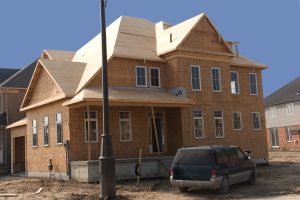(201) 802-9202
 In New Jersey, before you think of putting an addition onto your house, installing a fence along your property line, or installing a shed or pool in your backyard, it is critical for you to check with your town to determine whether a variance will be required. A variance is an allowance by the town’s Zoning Board of Adjustment to effectively do something on your property that by law, you are not permitted to do. For example, a town may have a requirement that a building cannot be within 20 feet of the side of its property line. Therefore, if you plan on building a structure or making an addition that will be 15 feet from the side of the property line, you will need a side yard setback variance. In addition to side yard setback requirements, towns often have rules on the allowable heights of structures, the number of sheds or other “accessory” structures allowed on a given property and the percentage of the property that can be covered by buildings or other structures. When a variance is sought in order to exceed what is allowed by the town, it is known as a Bulk Variance. There are several types of Bulk Variances and they include:
In New Jersey, before you think of putting an addition onto your house, installing a fence along your property line, or installing a shed or pool in your backyard, it is critical for you to check with your town to determine whether a variance will be required. A variance is an allowance by the town’s Zoning Board of Adjustment to effectively do something on your property that by law, you are not permitted to do. For example, a town may have a requirement that a building cannot be within 20 feet of the side of its property line. Therefore, if you plan on building a structure or making an addition that will be 15 feet from the side of the property line, you will need a side yard setback variance. In addition to side yard setback requirements, towns often have rules on the allowable heights of structures, the number of sheds or other “accessory” structures allowed on a given property and the percentage of the property that can be covered by buildings or other structures. When a variance is sought in order to exceed what is allowed by the town, it is known as a Bulk Variance. There are several types of Bulk Variances and they include:
- FRONT YARD SETBACK
- REAR YARD SETBACK
- SIDE YARD SETBACK
- BUILDING COVERAGE
- IMPROVED LOT COVERAGE
- MAXIMUM BUILDING HEIGHT
It is important that you discuss variances with your architect or contractor at the onset of designing your new construction or addition. Many times architects can work within the town’s property requirements, thereby eliminating the need for a variance and the associated fees that come with the variance.
Every Municipality in the State of New Jersey has a Zoning Board of Adjustment except for those who have a combined Land Use Board for both Planning and Zoning. Planning Board’s are typically for development applications and subdivisions. For variance applications before a Zoning Board or a combined Land Use Board, property owners will need to notify any property owners within 200 feet of your Property. The notice requirement allows neighbors to appear at the hearing to either speak in favor or against the variance application. Once the Application is deemed complete by the Land Use Official, the matter will be set down for a hearing. At the hearing it will be necessary for either you or your attorney to address the Board to convince them why obtaining a variance, or varying from the requirements of the Borough Ordinance, does not violate the Borough Ordinance and complies with the requirements of the Land Use Code. If the variance is approved, you will be permitted to erect the structure that was proposed. However, if denied, you will forever be prevented from constructing the proposed structure.
It is often necessary to meet with an attorney and possibly an architect, professional planner or professional engineer before submitting a variance application to a Zoning Board. Meyerson, Fox, Mancinelli & Conte, P.A.’s land use department regularly assists homeowners with variance applications before Zoning Boards of Adjustment throughout Bergen County. If you are considering construction on your property and have questions about the variance process, contact one of our land use attorneys today.
About the author: John A. Conte, Jr. is a Partner with Meyerson, Fox, Mancinelli & Conte, P.A. in Montvale, New Jersey. Mr. Conte concentrates his practice in business law, commercial litigation, real estate and land use law and estate planning.

